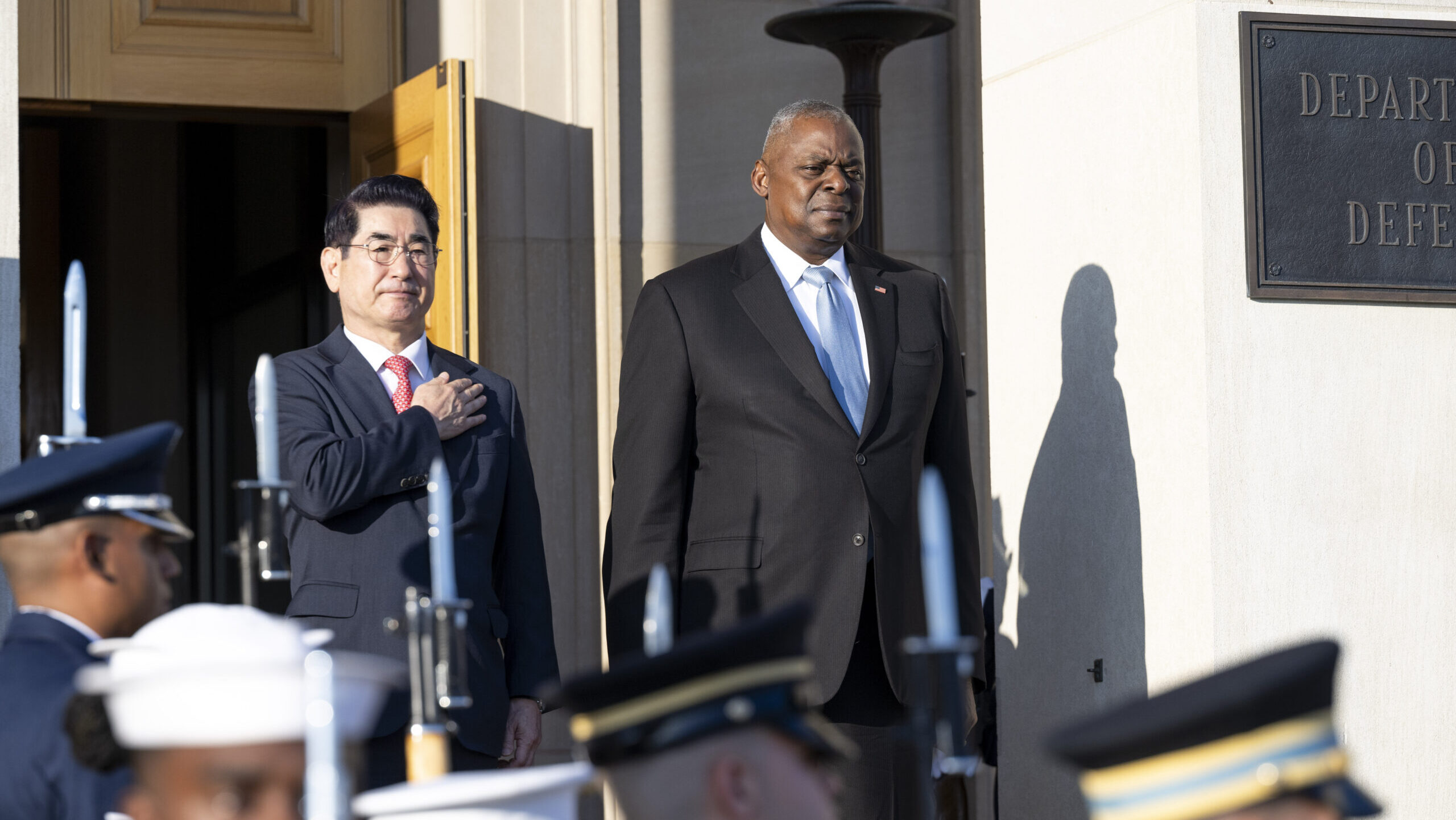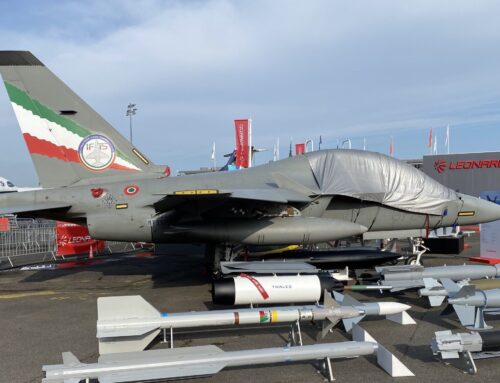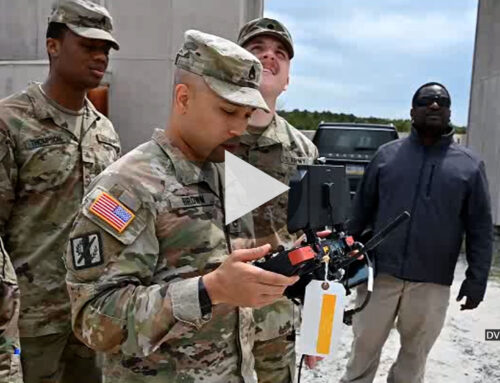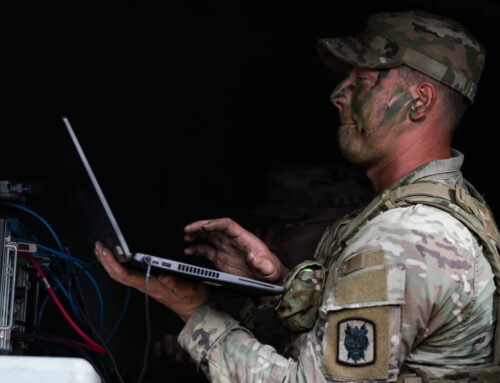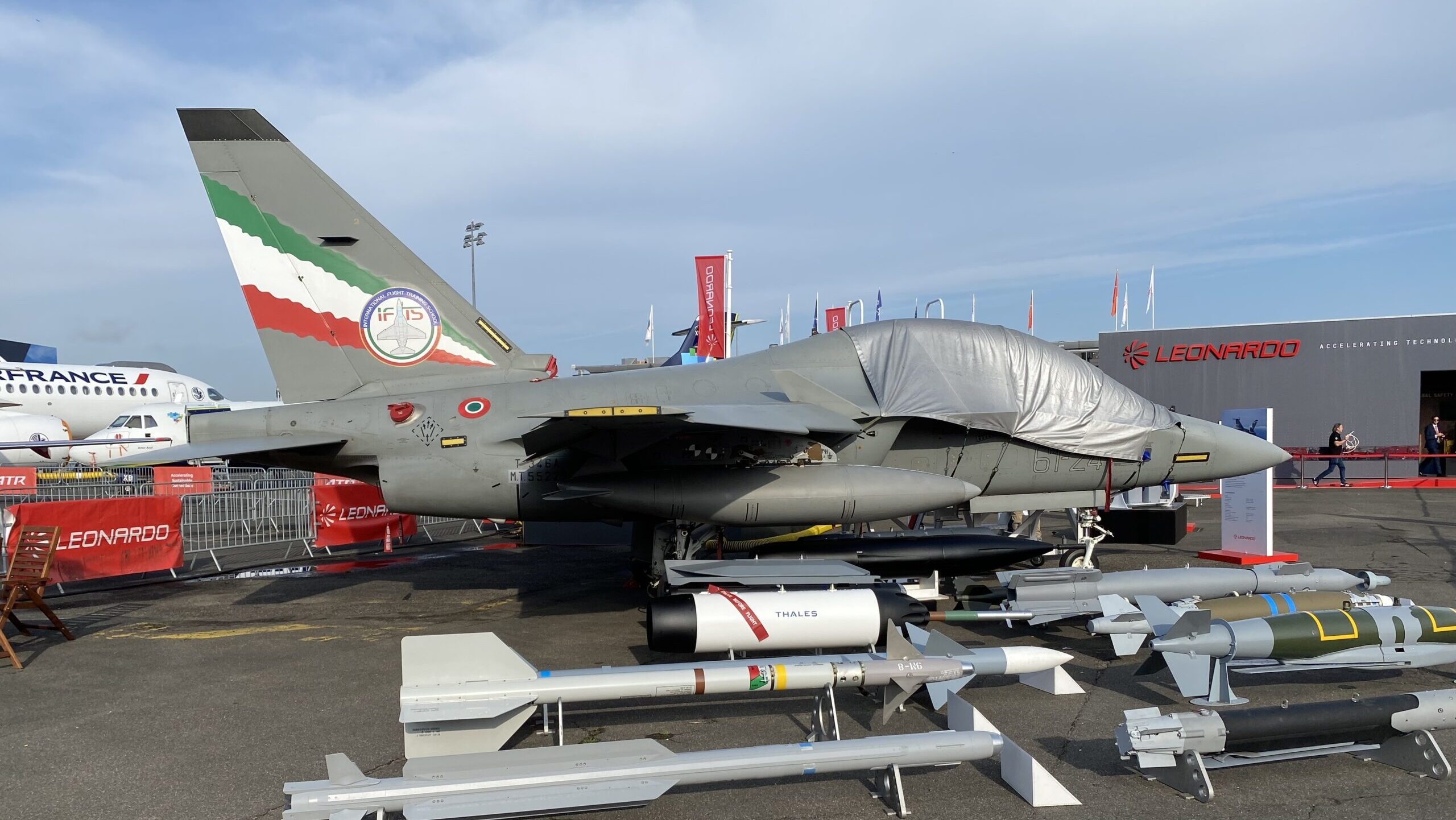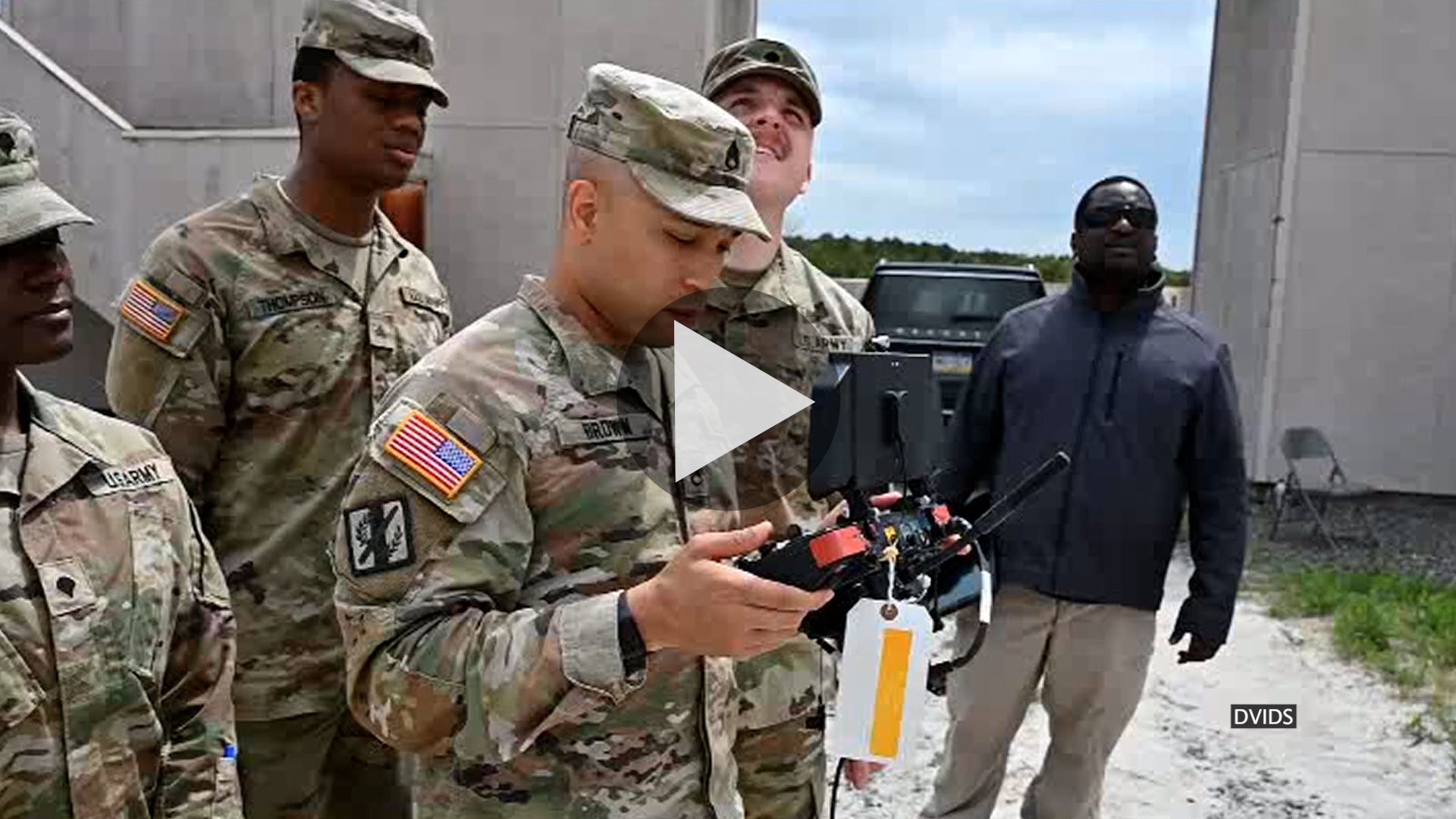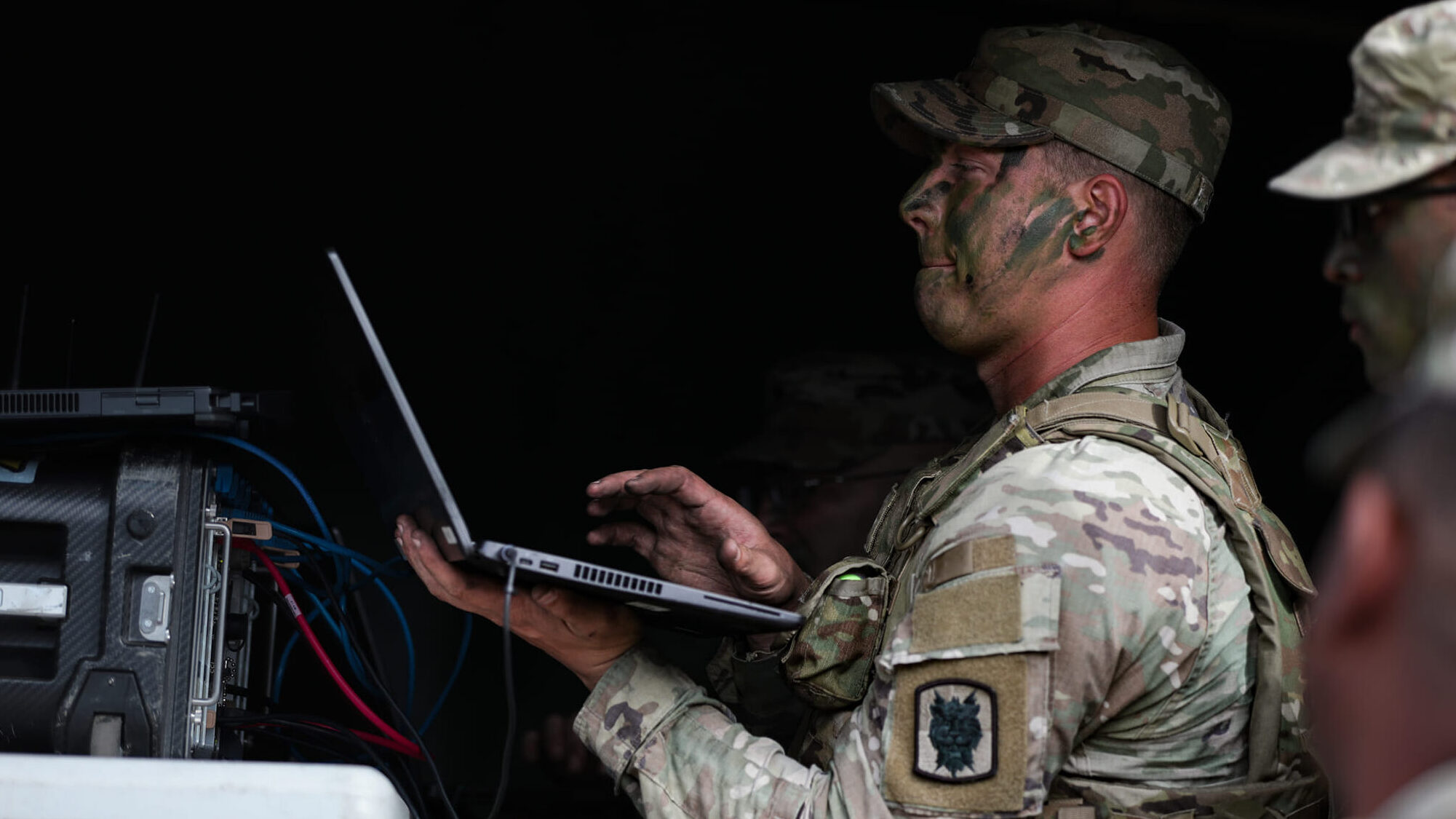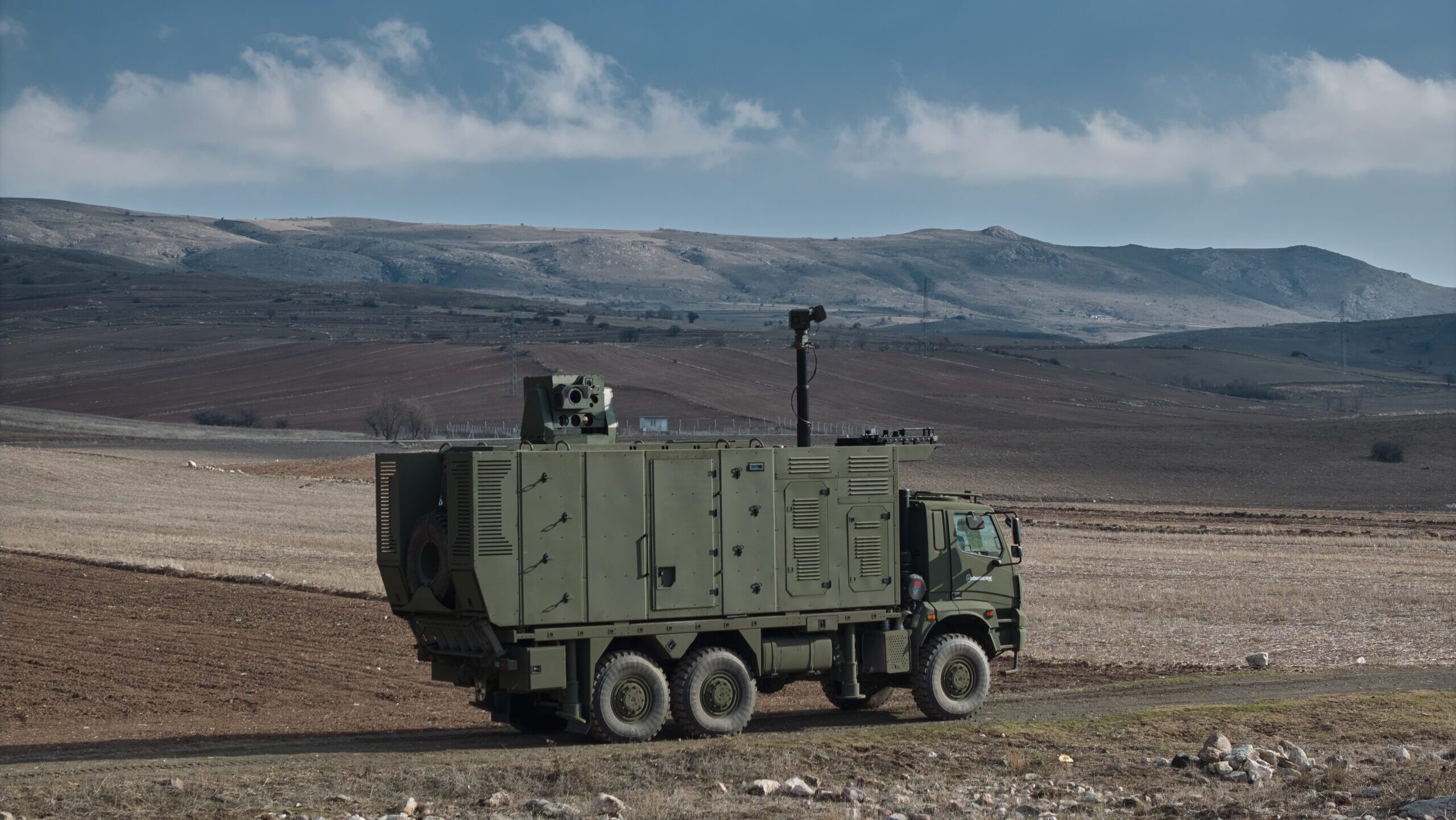Secretary of Defense Lloyd Austin and South Korean Defense Minister Kim Yong Hyun stand for the playing of the US and South Korean national anthems prior to a US-Republic of Korea Security Consultative Meeting at the Pentagon on Oct. 30, 2024. (DoD photo/US Navy Petty Officer 1st Class Alexander Kubitza)
WASHINGTON — The defense ministers for the US and South Korea today announced a new joint defense science and technology executive committee, one that expressly will consider options for Seoul’s participation in AUKUS Pillar II.
“Based on the defense vision of the alliance, we plan to establish a vice-minister level defense science and technology executive committee within this year to explore the application of cutting-edge science and technology in the defense sector, as well as cooperation on AUKUS Pillar II,” Kim Yong Hyun, the minister from South Korea, said during comments at the Pentagon.
Kim’s announcement came on the heels of the US-Republic of Korea security consultative meeting today that included US Defense Secretary Lloyd Austin. Tomorrow, the duo will join Secretary of State Antony Blinken and ROK Minister of Foreign Affairs Cho Tae-yul for a 2+2 meeting.
While North Korea’s deployment of upwards of 10,000 troops to Russia is a hot-button topic for the two nations this week, the Pentagon announced beforehand that the S&T expansion will remain a focal area, particularly in the areas of autonomous systems, artificial intelligence, and quantum technologies.
That fits in nicely with the six technology areas identified as priorities for Pillar II: undersea, quantum, artificial intelligence and autonomy, cyber, hypersonic work, and electronic warfare. While US officials said in September that they are open to other areas of opportunities, the goal is to keep the focus on those areas as much as possible.
Ever since the creation of AUKUS, there has been a question of whether other nations would be allowed to join the tripartite agreement. Officials have made a delineation: Pillar I, which is focused on nuclear submarine technology and tighter military alliances between the US, UK and Australia, is closed. But Pillar II would offer opportunities for other countries to get involved.
That has led to some confusion about whether outside countries can “join” Pillar II. Inside the Pentagon, at least, the issue is viewed less as one of other nations “joining” and more about allowing outside parties to work on technological efforts the three core AUKUS nations are developing.
Speaking to Breaking Defense in August, Richard Marles, Australia’s defense minister, said that while he expects Pillar II to “grow,” the focus has to be on making sure “we get Pillar II into a place where there is something to, kind of, offer.
“I think what’s really important is that we get this better down amongst the three of us first, so that we really know what the architecture of our collaboration looks like, and what the specific projects are,” he said.
The first country to be formally tied to Pillar II was Japan, in an April announcement that the AUKUS nations are “considering cooperation with Japan on AUKUS Pillar II advanced capability projects.” (As an example of the confusion about how Pillar II works, that statement was followed almost immediately by a statement by Australia’s prime minister that “What is not proposed is to expand the membership of AUKUS.”)
Officials in New Zealand have had preliminary talks with Australian counterparts about participation in Pillar II, New Zealand’s defense minister told Breaking Defense earlier this year. And there have been calls for Canada to take part as well. (Given New Zealand and Canada are the two non-AUKUS members of the 5 Eyes intelligence sharing network, they both have close connections to the AUKUS partners.)


